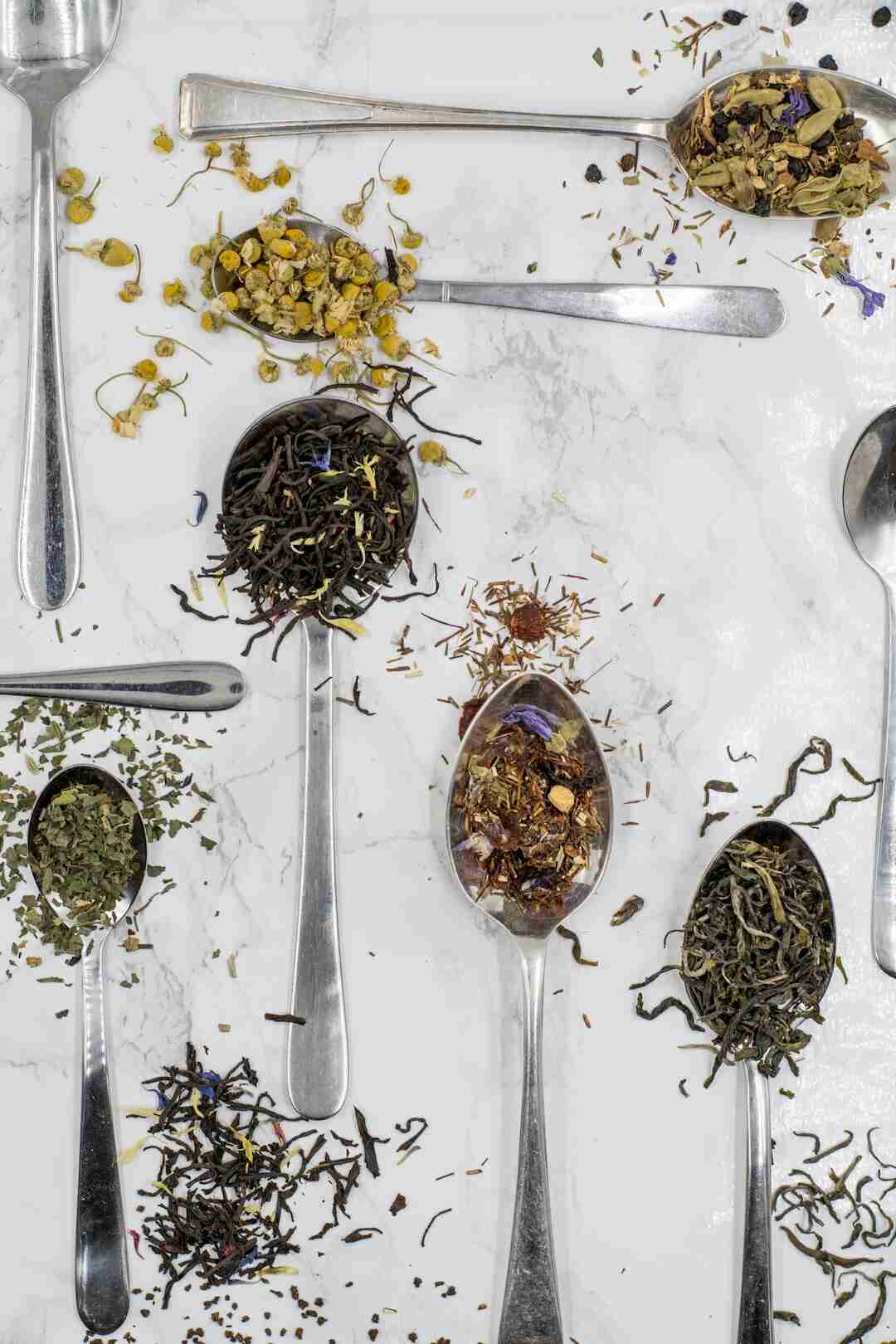Discovering the World of Camellia sinensis: The Plant Behind Your Cup of Tea
Tea is one of the most popular beverages in the world, enjoyed by millions every day. But have you ever wondered where this beloved drink comes from? The answer lies in the Camellia sinensis plant species, which is used for producing tea. This plant is native to Asia and is grown in many countries around the world, including China, India, Japan, Sri Lanka, and Kenya.
The Two Main Varieties of Camellia Sinensis
There are two main varieties of Camellia sinensis: Camellia sinensis var. sinensis (Chinese tea) and Camellia sinensis var. assamica (Assam tea). These varieties differ in their physical characteristics, flavor, and caffeine content.
- Chinese tea plants are smaller and have smaller leaves, while Assam tea plants are larger and have larger leaves.
- Chinese tea tends to have a lighter and more nuanced flavor, while Assam tea is bolder and stronger.
- The caffeine content of Camellia sinensis can vary depending on the variety, growing conditions, and processing methods. Generally, Chinese tea has less caffeine than Assam tea.
- However, the caffeine content can also depend on the specific type of tea (e.g. green, black, white, oolong) and how it is brewed (e.g. steeping time, water temperature).
Cultivars of Camellia Sinensis
In addition to the two main varieties, there are also many different cultivars of Camellia sinensis that have been developed over time. These cultivars can have unique characteristics and flavors, and some may have higher or lower caffeine content than others.
| Cultivar Name | Origin | Characteristics |
|---|---|---|
| Longjing | China | A delicate, nutty flavor with a hint of sweetness; low in caffeine |
| Assamica | India | Bold and malty flavor; high in caffeine |
| Gyokuro | Japan | A sweet, floral flavor with a rich, velvety texture; medium in caffeine |
These are just a few examples of the many cultivars of Camellia sinensis that exist. Each one offers a unique taste and experience, making the world of tea a never-ending adventure.
Conclusion
Next time you sit down with a cup of tea, take a moment to appreciate the wonderful plant that made it possible. With its rich history, diverse varieties, and unique cultivars, Camellia sinensis has much to offer. So go ahead, explore the world of tea you never know what delicious discovery you might make.
The Buzz on Tea and Caffeine: Understanding the Amounts and Effects
If you’re a tea lover, you may have wondered about the amount of caffeine in your favorite cup of tea. Caffeine is a natural stimulant found in many plants, including Camellia sinensis, the plant used to make tea. Let’s dive into the world of tea and caffeine and explore the various factors that affect the caffeine content and its effects on the human body.
Factors Affecting Caffeine Content in Tea
The amount of caffeine in tea can depend on various factors, such as the type of tea, growing conditions of the tea plant, and processing methods used. Here’s a breakdown of the average caffeine content in different types of tea:
| Type of Tea | Average Caffeine Content per Cup |
|---|---|
| Black Tea | 47mg |
| Green Tea | 30mg |
| White Tea | 15mg |
As we can see, black tea has the highest amount of caffeine, followed by green tea and white tea. However, it’s important to note that these are just averages and can vary depending on the specific tea blend and brewing method.
The Effects of Caffeine on the Human Body
So, what are the effects of caffeine on the human body? Caffeine has been found to have various positive effects, such as:
- Increased alertness
- Improved cognitive function
However, excessive consumption of caffeine can lead to negative effects such as:
- Anxiety
- Jitters
- Insomnia
It’s important to note that the caffeine content in tea is lower than that in coffee, which contains around 95 milligrams of caffeine per cup. This means that if you’re looking for a milder caffeine boost, tea may be a better option for you.
Limiting Caffeine Intake
It’s also essential to keep in mind that some people may be more sensitive to caffeine than others. As a general guideline, it’s recommended to limit caffeine intake to no more than 400 milligrams per day to avoid negative effects. This roughly translates to:
- 4 cups of black tea
- 7 cups of green tea
- 27 cups of white tea
It’s important to note that these are just estimates, and the caffeine content can vary depending on the specific tea blend and brewing method.
Conclusion
In conclusion, understanding the caffeine content and effects of tea can help you make informed decisions about your caffeine intake. Remember to enjoy your cup of tea in moderation and be mindful of your caffeine intake to avoid negative effects. Happy sipping!
The Surprising Factors That Affect Caffeine Content in Tea
Tea has been enjoyed for centuries as a soothing and stimulating beverage, but did you know that the caffeine content in your cup of tea can vary depending on a variety of factors? Here are some surprising findings from recent research on the factors that affect caffeine content in tea.

Altitude
Camellia sinensis plants grown at higher altitudes tend to have higher caffeine content in their leaves compared to those grown at lower altitudes. This may be due to the stress that the plants experience at higher altitudes, which can cause them to produce more caffeine as a natural defense mechanism.
Age of Leaves
The age of the leaves also affects caffeine content, with younger leaves containing more caffeine than older leaves. This is because caffeine is produced by the plant as a natural pesticide to deter insects from eating the tender young leaves.
Processing Methods
Processing methods such as oxidation and fermentation can also affect caffeine content, with more oxidized teas typically having lower caffeine content than less oxidized teas. This is because caffeine is a water-soluble compound that can be lost during the processing of tea leaves.
Time of Day and Season of Harvest
Time of day and season of harvest can also impact caffeine content, with teas harvested earlier in the day or earlier in the growing season generally having higher caffeine content. This is because caffeine production in the plant is highest in the morning and during the early growing season.
Cultivar
Finally, the specific cultivar of Camellia sinensis can play a role in caffeine content, with some cultivars naturally producing more caffeine than others. This is due to genetic differences in the plant’s ability to produce caffeine.
Conclusion
As you can see, the caffeine content in your cup of tea can be affected by a variety of factors, from the altitude and age of the leaves to the processing methods and cultivar of the plant. So next time you brew a cup of tea, take a moment to consider the many factors that have contributed to the caffeine content in your cup.
The Truth About Caffeine in Tea: Benefits and Risks
Tea is one of the most popular beverages in the world, enjoyed for its refreshing taste, soothing aroma, and potential health benefits. However, what many people don’t know is that tea contains caffeine, a natural stimulant that can have both positive and negative effects on our health.
How Much Caffeine is in Tea?
The amount of caffeine in tea can vary depending on several factors, such as the type of tea, the brewing time, and the water temperature. Generally, black and green teas contain higher levels of caffeine than white and herbal teas. The longer you steep your tea and the hotter the water, the more caffeine it will contain.
| Type of Tea | Caffeine Content |
|---|---|
| Black Tea | 23-110 mg per 8 oz serving |
| Green Tea | 35-75 mg per 8 oz serving |
| White Tea | 6-60 mg per 8 oz serving |
| Herbal Tea | 0 mg per 8 oz serving |
The Benefits of Caffeine in Tea
When consumed in moderation, caffeine in tea can offer several health benefits. It can improve mental alertness, enhance cognitive function, and boost mood. It may also have antioxidant properties that can help protect against certain diseases, such as cancer and heart disease.
The Risks of Excessive Caffeine Intake
While moderate caffeine intake is generally safe for most people, excessive caffeine consumption can lead to adverse effects. It can cause anxiety, insomnia, and increased heart rate. It may also interfere with nutrient absorption and cause dehydration. It is important to note that individual tolerance for caffeine can vary, and some people may be more sensitive to its effects than others.
How to Reduce Caffeine Content in Tea
If you are concerned about the caffeine content in your tea, there are several ways to reduce it. You can choose decaffeinated tea, which has had most of its caffeine removed. You can also use shorter brewing times and lower water temperatures when preparing your tea. This will result in a milder flavor and lower caffeine content.
Final Thoughts
Tea is a delicious and healthy beverage that can be enjoyed in moderation. While caffeine in tea can offer several benefits, it is important to be mindful of your intake and monitor any adverse effects. By choosing the right type of tea and adjusting your brewing method, you can enjoy the taste and benefits of tea without worrying about excessive caffeine.
If you have any concerns about your caffeine intake or its effects on your health, it is always best to consult with your healthcare professional.


Leave a Reply